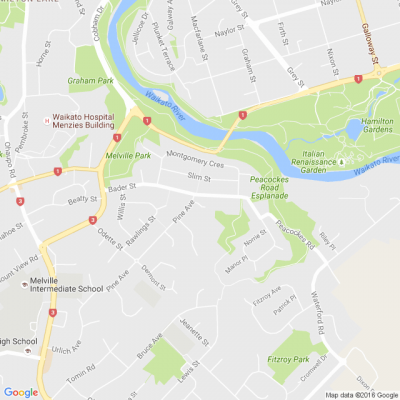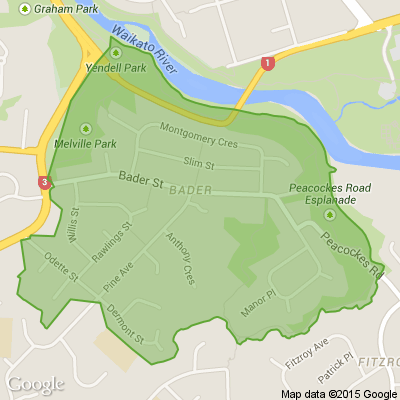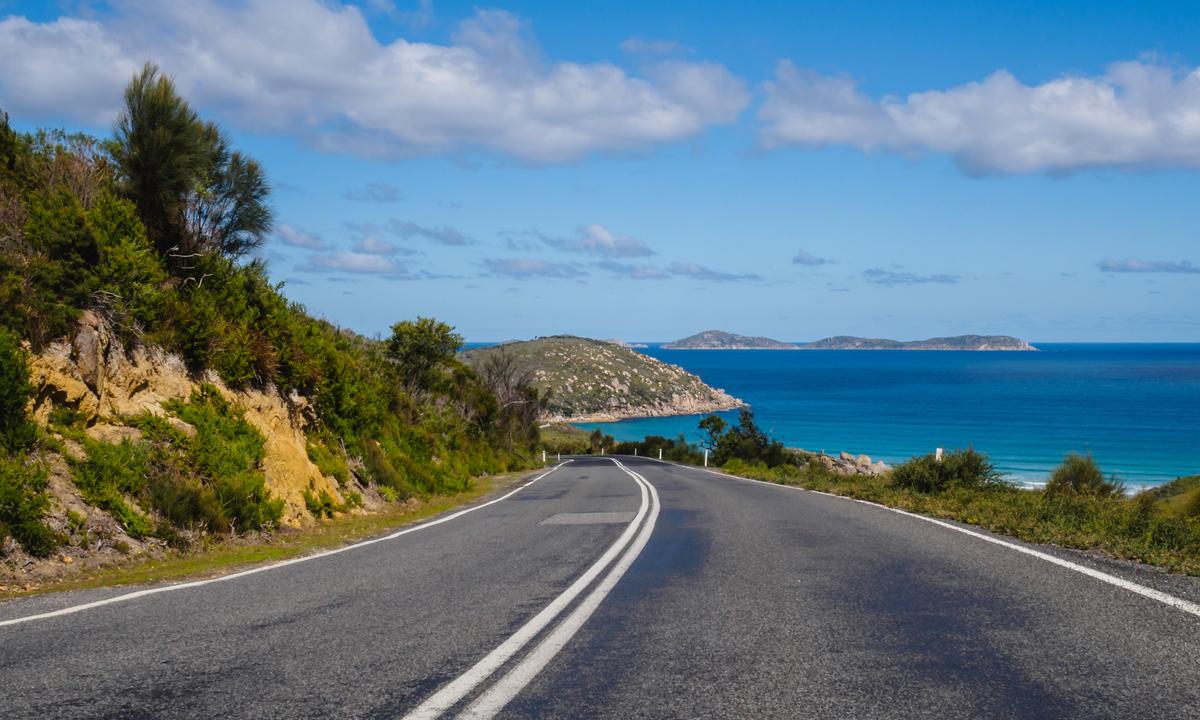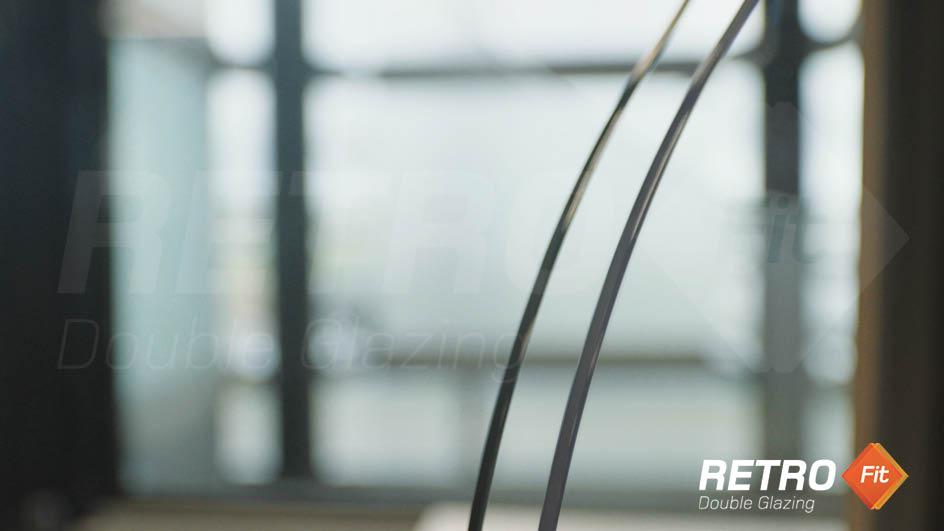
Know what’s happening
Access the private noticeboard for verified neighbours near you. Keep informed about any suspicious activity, send urgent updates to your neighbours when required and discuss emergency planning.
Get to know your neighbours
Browse the directory and start getting to know your neighbours. Don’t want to post to the whole neighbourhood? Send a private message.
Buy, sell and give away
Want to declutter your garage? Buy some used household items? Give away some garden stuff? Become a verified neighbour to browse and post items for sale. Trading is simple when everyone lives nearby.



Thank you for using Neighbourly
You may receive an email confirmation for any offer you selected. The associated companies will contact you directly to activate your requests.
Robert Anderson from Curtain Clean Hamilton
Abaca is a natural leaf fibre that comes from a relative of the banana tree family native to the Philippines that grows throughout tropical regions. It is also called Manilla hemp, though it is not related to actual hemp.
Abaca has great economic importance and is harvested for its strong, … View moreAbaca is a natural leaf fibre that comes from a relative of the banana tree family native to the Philippines that grows throughout tropical regions. It is also called Manilla hemp, though it is not related to actual hemp.
Abaca has great economic importance and is harvested for its strong, versatile fibre. Being regarded as the strongest natural fibres in the world, abaca can be put into various modern sophisticated technologies like the automobile industry and as a raw material for other important industries such as textiles, fashion, and the décor/furnishing industry.
Abaca is commonly used by the paper industry for such specialty uses such as tea bags, banknotes, filter papers and in medical filter sheets. While it is currently used mostly in paper products, abaca has a long history in textiles. Abaca fabric has a stiff quality and holds its structure (it is considered a hard fibre and is comparable in texture to sisal and coir). It has a very long fibre length and is one of the strongest fibres - flexible, durable, and highly resistant to saltwater damage. For these reasons it has been used over time for rope and cording. It can also be woven into home and fashion accessories including wall coverings, rugs, tapestries, and bags. It can be used to make handcrafts such as hats, bags, carpets, clothing, and furniture.
Abaca is generally considered to be a sustainable, environmentally friendly fibre that can empower communities. It has been identified by the United Nations as a “Future Fibre”. That said, not many standards and certifications are used for abaca, so transparency and doing your own due diligence around environmental and social impact are very important when sourcing. The Rainforest Alliance currently certifies some abaca farms.
The harvesting and extraction of fibre from abaca is painstaking process which involves many processes. Stripping and drying of fibres is either done manually or mechanically. After extraction, different grades of fibres are obtained which are then accordingly used for different set of industrial activities.
The world's leading abaca producer is the Philippines. While the crop is also cultivated in other Southeast Asian countries, the second largest producing country is Ecuador, where abaca is grown on large estates and production is increasingly mechanized. Almost all abaca produced is exported, mainly to Europe, Japan, and the USA. Exports from the Philippines are increasingly in the form of pulp rather than raw fibre.
Keep reading: www.curtainclean.co.nz...
Colleen from Hamilton East
Boys/unisex Graffeeti Shoes Eur 29, US 11/11.5.
They are 20cm long. These shoes can be tagged/ erased with the pens provided. Nail polish remover will also take off marks.
They were bought as a gift for a family member but didn’t fit.
Price: $10
Hey neighbours,
In the lead up to the 2020 election, Stuff is keeping voters up to date with what’s happening in their electorate, through Neighbourly. Here’s what you need to know about the candidates in the running to be Hauraki-Waikato's MP.
At the October 17 election, New Zealanders… View moreHey neighbours,
In the lead up to the 2020 election, Stuff is keeping voters up to date with what’s happening in their electorate, through Neighbourly. Here’s what you need to know about the candidates in the running to be Hauraki-Waikato's MP.
At the October 17 election, New Zealanders will have the opportunity to choose their regional spokesperson.
Through the Mixed Member Proportional (MMP) voting system, those enrolled can vote for the party they want as well as a local representative.
Why does my MP matter?
The person elected will be the voice for your region in Parliament. If you’re having trouble getting entitlements or dealing with Government departments, they can help. If your community needs funding for certain projects or activities, or there isn’t enough healthcare in the area, the elected MP can step in and help.
To read more, click here.

Hey neighbours,
In the lead up to the 2020 election, Stuff is keeping voters up to date with what’s happening in their electorate, through Neighbourly. Here’s what you need to know about the candidates in the running to be Hauraki-Waikato's MP.
At the October 17 election, New Zealanders… View moreHey neighbours,
In the lead up to the 2020 election, Stuff is keeping voters up to date with what’s happening in their electorate, through Neighbourly. Here’s what you need to know about the candidates in the running to be Hauraki-Waikato's MP.
At the October 17 election, New Zealanders will have the opportunity to choose their regional spokesperson.
Through the Mixed Member Proportional (MMP) voting system, those enrolled can vote for the party they want as well as a local representative.
Why does my MP matter?
The person elected will be the voice for your region in Parliament. If you’re having trouble getting entitlements or dealing with Government departments, they can help. If your community needs funding for certain projects or activities, or there isn’t enough healthcare in the area, the elected MP can step in and help.
To read more, click here.

NumberWorks'nWords Hamilton Central
We know that our team here at NumberWorks'nWords are looking forward to recharging the batteries over the holidays while preparing for more fun with maths and English in Term 4.
We hope you all have a great break, and have the chance to relax and have some fun with your families!

Todd Nachowitz from EarthDiverse
“Meet the Ethnic Women Candidates: NZ Elections 2020 Webinar series”
1. Tue 29th Sep 2020, 6:00-7:30pm
2. Wed 30th Sep 2020, 6:00-7:30pm
Hosted by the Ethnic Women in Politics (EWP) project at the University of Auckland and University of Waikato, with support from the Marsden Fund, Royal… View more“Meet the Ethnic Women Candidates: NZ Elections 2020 Webinar series”
1. Tue 29th Sep 2020, 6:00-7:30pm
2. Wed 30th Sep 2020, 6:00-7:30pm
Hosted by the Ethnic Women in Politics (EWP) project at the University of Auckland and University of Waikato, with support from the Marsden Fund, Royal Society and EarthDiverse, the ‘Meet the Ethnic Women Candidates: NZ Elections 2020’ webinar series features two panel discussions with women candidates from minority ethnic communities who represent the major political parties in the upcoming 2020 New Zealand elections. The use of the term ‘Ethnic’ is defined as non-Māori, non-Pacific and non-Pākeha. Globally, we are observing an increased spotlight on women leaders from minority ethnic groups, often as voices of resistance to and transformation within established political systems.
1. ‘Young, Millennial and Ethnic’
Date: Tuesday 29 September 2020
Time: 6:00-7:30 pm
Speakers:
Rimu Bhooi: Candidate for Hamilton East, Green Party
Nuwanthie Samarakone: Candidate for Manurewa, National Party
Zahra Hussaini: Candidate for Christchurch, Labour Party
Ciara Swords: Candidate for Whangārei, TOP Party
2. ‘An Established Race’
Date: Wednesday 30 September 2020
Time: 6:00-7:30 pm
Speakers:
Golriz Ghahraman: Member of Parliament, Green Party
Anne Degia-Pala: Member of Parliament, NZ First Party
Dr Parmjeet Parmar: Member of Parliament, National Party
Priyanca Radhakrishnan: Member of Parliament, Labour Party

Todd Nachowitz from EarthDiverse
EarthDiverse is pleased to announce its Term 4 lineup of language, religious diversity and History courses beginning the week of Monday 19 October. Language classes on offer this Term are Arabic, Hebrew, Hindi and Urdu. Religious Diversity classes on offer this Term are World Religions: Buddhism’… View moreEarthDiverse is pleased to announce its Term 4 lineup of language, religious diversity and History courses beginning the week of Monday 19 October. Language classes on offer this Term are Arabic, Hebrew, Hindi and Urdu. Religious Diversity classes on offer this Term are World Religions: Buddhism’ and ʻReligion & Nonviolence’ and our newest series of History courses begins this Term with two new course entitled ‘A History of Death’ and ‘An Introduction to European Art History.’ Both in-person and distance-learning options are available, including on-line live-streaming and video-recorded sessions from our classroom, so that you can best decide how and when you choose to study. It also allows those living outside the Waikato to enrol in our course offerings. Please check our website for more information and registration details.

Hey neighbours,
Good news – 2021 is set to be the year of the long weekend.
Five out of 10 public holidays will be Mondayised (or Tuesdayised in one case) next year, which means if you work a standard Monday to Friday week, you can look forward to some extended breaks.
In fact, once … View moreHey neighbours,
Good news – 2021 is set to be the year of the long weekend.
Five out of 10 public holidays will be Mondayised (or Tuesdayised in one case) next year, which means if you work a standard Monday to Friday week, you can look forward to some extended breaks.
In fact, once you’ve tacked on the weekends, you’ll end up getting a whopping 25 days off out of those 10 stat days, plus your region’s anniversary day.
To find out how to get the most out of your annual leave next year, click here.

84 replies (Members only)
Reporter Homed - Waikato Times
Welcome to your latest edition of Homed. Printed and distributed across the Waikato, you can find our weekly gloss publication inside your Waikato Times each Saturday and online here. Our Homed Cover and Featured Home of the week is a Te Awamutu property offering picturesque views and encased … View moreWelcome to your latest edition of Homed. Printed and distributed across the Waikato, you can find our weekly gloss publication inside your Waikato Times each Saturday and online here. Our Homed Cover and Featured Home of the week is a Te Awamutu property offering picturesque views and encased amidst beautiful gardens. Howard Ashmore from Ray White Te Awamutu would love to see you at the open home tomorrow.

The Team from Red Cross Shop Hamilton East
Hi Neighbours,
Spring is here! Head down to your nearest Red Cross Shop and check out our new season stock!
We can't wait to see you!

The Team from Red Cross Shop Five Cross
Hi Neighbours,
Spring is here! Head down to your nearest Red Cross Shop and check out our new season stock!
We can't wait to see you!

Mei Leng Wong Reporter from NZ Gardener & Get Growing
In this week’s issue we say avocados are the fruit we all long to grow. It’s time to plant salad greens in containers, inspire junior gardeners, turn lawns into new garden beds and repot and feed hippeastrums.
We list 10 trees to plant to attract birds to your garden for shelter and a … View moreIn this week’s issue we say avocados are the fruit we all long to grow. It’s time to plant salad greens in containers, inspire junior gardeners, turn lawns into new garden beds and repot and feed hippeastrums.
We list 10 trees to plant to attract birds to your garden for shelter and a year-round food supply. Plus go in the draw for fertiliser and soil enhancer from Fodda and there’s another chance to win Mr Fothergill’s ultimate garden pack.
Delivered every Friday to your email inbox, Get Growing digital magazine offers seasonal gardening advice from the NZ Gardener magazine's team of experts. Each week we answer all your burning questions on raising fruit and veges and tell you the top tasks to do in your backyard this weekend. Subscribe here:

The team from EnergySmart - Waikato
Chances are your insulation is not performing optimally, it is a problem that is far more common than most people realise.

Robert Anderson from Curtain Clean Hamilton
Seam Slippage is one of four key topics (others include Abrasion Resistance, Pilling, and Colourfastness) that we are covering to provide some background as to how we test and why.
Test results provide us with critical information about textile’s durability and suitability for certain … View moreSeam Slippage is one of four key topics (others include Abrasion Resistance, Pilling, and Colourfastness) that we are covering to provide some background as to how we test and why.
Test results provide us with critical information about textile’s durability and suitability for certain applications. We externally test all James Dunlop and Mokum textiles in Melbourne at a highly reputable laboratory who are amongst the most conservative and stringent in the world, due to the extremely harsh environmental conditions we face here in Australia and New Zealand.
We have gathered a number of frequently asked questions relating to seam slippage, so we asked our Mokum Studio designers Stephanie Moffitt and Annie Moir to share their expert knowledge.
Seam slippage is another equally important upholstery test, can you explain what seam slippage actually means?
Seam slippage is the separation or pulling apart of yarns in a fabric usually along a sewn seam or join. More often than not, the yarns don’t actually break they just separate and leave an unsightly gap along the fabric join.
What are the most common causes for seam slippage?
Seam slippage may be the result of a poorly constructed textile and /or the use of defective yarns in the fabric. But more commonly it is due to an inadequate standard of upholstery manufacturing i.e. a display of insufficient seam allowance, a deficient number of stitches in the seam or failure to overlock raw edges during the upholstery process – or a combination of all three factors.
Seam slippage usually occurs on joins that are subjected to heavy load and pressure such as seat cushions and arm rests. Certain furniture styles put more stress on fabric seams such as tub chairs and furniture with a fixed back or seat cushions.
Can composition play a part in seam slippage?
Yes, it can, Linen for example is loved for being a smooth lustrous fibre, but this can make it more susceptible to seam slippage with heavy load. For some linen textiles we would recommend discussing the need for reinforcing upholstery seams with your upholstery manufacturer.
The note “reinforce upholstery seams” is sometimes listed on our sampling specifications – what does it actually mean? Should we assume the fabric is inferior quality?
Firstly, no it doesn’t infer inferior quality. If we’ve specified it as being suitable for upholstery then it is fit for purpose, but we recommend additional seam support for that particular textile.
“Reinforce upholstery seams” simply means using an additional safeguard by stitching a tape along the seam to prevent fraying in high load areas, such as the corner back cushions. Overlocking should be used for loose woven fabric and seated cushion seams.
What’s the remedy for seam slippage? Can you fix it once it starts?
It is difficult to repair seam slippage once it starts. In almost all instances of seam slippage, it will require the furniture to be recovered, or re upholstered. It’s important to ascertain the cause of the seam slippage. If the seam slippage can be identified as being a result of inadequate manufacturing, you’ll need to work with the upholsterer to ensure appropriate manufacturing techniques are being used, including reinforcing seams if required. If the seam slippage is clearly related to the fabric, the furniture would need to be recovered, either from a different batch (if it’s an isolated batch issue) or selecting an alternative fabric which is more suitable for that particular frame.
Can you explain how the seam slippage test is performed?
The test measures how resistant a fabric is to yarns opening/ slipping under pressure along a seam line. Two fabric swatches are sewn together with a standardised seam. The swatches are pulled apart with an equal and opposite force. The test is performed in both warp and weft directions. Any seam opening is then measured while the fabric swatches are being pulled apart. According to the Australian standard, a seam opening should be less than 6mm at maximum force. A lower result indicates a smaller opening and thus a better resistance against seam slippage.
Written by: jamesdunloptextiles.com...
RetroFit Double Glazing - Waikato
What is double glazing? We’ve put together some information that might help you with your research if you're considering getting retrofit double glazing click here to read. If you’re interested, we offer a free no obligation quote click here or call us on 0800 658 658.

 Loading…
Loading…
Are you sure? Deleting this message permanently removes it from the Neighbourly website.
 Loading…
Loading…

 Tender
Tender



 Marketed by David McGuire
Marketed by David McGuire

 Auction
Auction



 Marketed by David McGuire
Marketed by David McGuire

 Auction
Auction



 Marketed by Alissar Boudreau
Marketed by Alissar Boudreau

 By Negotiation
By Negotiation



 Marketed by Anton Pires
Marketed by Anton Pires
© Neighbourly 2024
